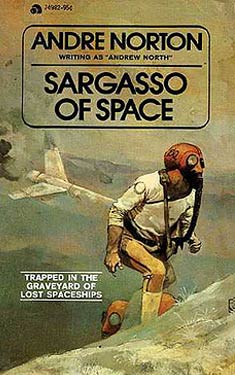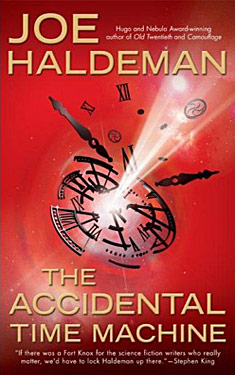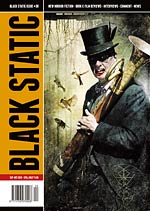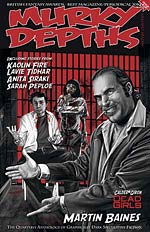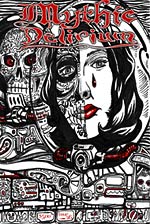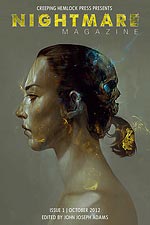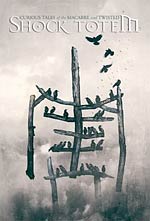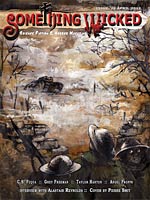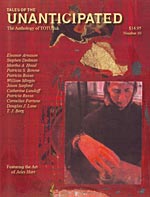Frankenstein’s Forefathers

We all know that Frankenstein’s monster was brought to life by powerful bolt of lightening. The image of him strapped to his iron bed as electricity courses through his body is an iconic Hollywood image. Never mind that such never transpired in Mary Shelley’s 1818 novel. For many of us, that is how he was born, whatever the book says. If, however, you were dismayed at the absence of such an origin the original Frankenstein, don’t be. The Creature may very well have been born from a thunderclap.
 It was the summer of 1816 when an eighteen-year-old Mary Shelley traveled with her husband, the incomparable Percy Blysshe Shelley, to Lake Geneva, where they rented a house adjacent to their friend, Lord Byron. The three of them were joined by Byron’s personal nurse (and likely lover), John Polidori. This was the Year of No Summer, when the Mt. Tambora eruption (the most powerful in recorded history) released so much ash into the atmosphere that temperatures plummeted in many areas of the world. One of the hardest hit areas was Lake Geneva, where it “proved a wet, ungenial summer”, according to Mrs. Shelley, “and incessant rain often confined us for days to the house.” So, instead of spending their “pleasant hours on the lake, or wandering on its shores,” as they had done before Tambora’s ash blotted out the sun, they plunged themselves into (what else?) books:
It was the summer of 1816 when an eighteen-year-old Mary Shelley traveled with her husband, the incomparable Percy Blysshe Shelley, to Lake Geneva, where they rented a house adjacent to their friend, Lord Byron. The three of them were joined by Byron’s personal nurse (and likely lover), John Polidori. This was the Year of No Summer, when the Mt. Tambora eruption (the most powerful in recorded history) released so much ash into the atmosphere that temperatures plummeted in many areas of the world. One of the hardest hit areas was Lake Geneva, where it “proved a wet, ungenial summer”, according to Mrs. Shelley, “and incessant rain often confined us for days to the house.” So, instead of spending their “pleasant hours on the lake, or wandering on its shores,” as they had done before Tambora’s ash blotted out the sun, they plunged themselves into (what else?) books:
Some volumes of ghost stories, translated from the German into French, fell into our hands. There was the History of the Inconstant Lover, who, when he thought to clasp the bride to whom he had pledged his vows, found himself in the arms of the pale ghost of her whom he had deserted. There was the tale of the sinful founder of his race, whose miserable doom it was to bestow the kiss of death on all the younger sons of his fated house, just when they reached the age of promise. His gigantic, shadowy form, clothed like the ghost in Hamlet, in complete armour, but with the beaver up, was seen at midnight, by the moon’s fitful beams, to advance slowly along the gloomy avenue. The shape was lost beneath the shadow of the castle walls; but soon a gate swung back, a step was heard, the door of the chamber opened, and he advanced to the couch of the blooming youths, cradled in healthy sleep. Eternal sorrow sat upon his face as he bent down and kissed the forehead of the boys, who from that hour withered like flowers snapt upon the stalk. I have not seen these stories since then; but their incidents are as fresh in my mind as if I had read them yesterday.
These stories famously inspired the Geneva circle (Lord Byron, Polidori, and Percy and Mary Shelley) to write their own tales of woe. It was Byron’s idea. “We shall each write a ghost story,” he proclaimed. The game was afoot. It was due to that challenge that Lord Byron wrote a fragment of a story that started the vampire trope in Western literature. Polidori, according to Shelley, penned a god-awful story “about a skull-headed lady, who was so punished for peeping through a key-hole—what to see I forget—something very shocking and wrong.” Eventually, Polidori ditched this story in favor of Byron’s, writing his own novel, The Vampyre, based on Byron’s fragment. The great Percy Shelley also began a story (based on his own childhood), but, as with the other two, he quickly gave up. As Mary put it, “The illustrious poets also, annoyed by the platitude of prose, speedily relinquished the uncongenial task.”
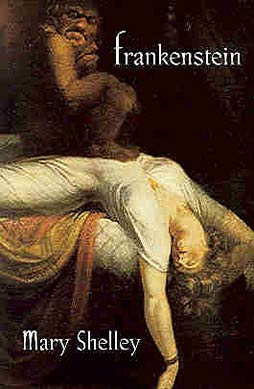 We all know who must have won Byron’s challenge. Mary Shelley was the only one to actually complete her “ghost story,” Frankenstein. It was unlike any ghost story ever written, however, because, instead of a bodiless soul, this “ghost,” was a reanimated body. Mrs. Shelley had turned the ghost story on its ear.
We all know who must have won Byron’s challenge. Mary Shelley was the only one to actually complete her “ghost story,” Frankenstein. It was unlike any ghost story ever written, however, because, instead of a bodiless soul, this “ghost,” was a reanimated body. Mrs. Shelley had turned the ghost story on its ear.
The Geneva Wager is a story you may have heard before. I remember hearing it when I first read Frankenstein as a teenager. It is, after all, where two monumental icons of 19th century horror originated. They are especially important icons for this time of year: Frankenstein’s monster and vampires are as essential to Hallowe’en as trick or treating. Yet one aspect of the story always eluded me: What were those stories that so captured the imagination of the Geneva circle that it would inspire monsters as enduring as the Creature and the Undead?
All I had to go on was Mary’s description, “Some volumes of ghost stories, translated from the German into French,” and a footnote describing the French title as Fantasmagoria. Even if I could find that tome, I don’t speak French! What is a linguistically impaired nerd to do? Eventually, of course, the Interwebs provided. It turns out Internet Archive (a rockin’ site that documents everything on the web and many things off it) has as a wonderful PDF scan of an 1813 edition, called Tales of the Dead. In it, you will find the two stories that Mary Shelley described. “The Death-Bride” (which she describes as “the History of the Inconstant Lover,” and “The Family Portraits,” (which she described in greatest detail) are particularly eerie tales that might keep you up at night, especially if you have a guilty conscience.
GMRC Review: Sargasso of Space by Andre Norton
 Chris Uhl (chuhl) can’t remember a time when he wasn’t a science fiction fan. He has a B.A. in Classics from Vassar College and an M.A. in English Literature from the University of Virginia. He has worked as a teacher, a legal assistant, a college development officer, a salesman, and a film extra. Chris may be the only WWEnd reviewer who has no blog. This is his fourth GMRC review to feature in the WWEnd blog.
Chris Uhl (chuhl) can’t remember a time when he wasn’t a science fiction fan. He has a B.A. in Classics from Vassar College and an M.A. in English Literature from the University of Virginia. He has worked as a teacher, a legal assistant, a college development officer, a salesman, and a film extra. Chris may be the only WWEnd reviewer who has no blog. This is his fourth GMRC review to feature in the WWEnd blog.
“WORLDS FOR SALE!
That was the startling cry that electrified Dane Thorson of the space-trader Solar Queen. It was his first trip and the cosmic auction was taking place at an isolated port of call, far out in the Milky Way.
Who’ll buy this newly-discovered planet? The data on it sealed — you may be getting a radioactive desert, you may be buying a fabulous empire, or you may be stuck with an untracked unconquerable jungle. And Dane and his fellow spacemen took the risk. They bought a planet, sight unseen, whose ominous name was… Limbo!”
If you can resist a blurb like that, you’re made of sterner stuff than I am. I read that page in my used book store and snapped up Sargasso of Space right away.
The hero of the story is Dane Thorsen, an apprentice cargo-master about to receive his first assignment in space. In a scene oddly prescient of the Sorting Hat scenes in Harry Potter, Dane and his classmates wait anxiously while a computer called “The Psycho” assigns them to a ship based on their compatibility with the current crews. Dane draws the Solar Queen, a Free Trader, which means an uncertain career of high risk and potentially high rewards – or poverty.
GMRC Review: The Accidental Time Machine by Joe Haldeman
 Glenn Hough (gallyangel) is, among other things, a nonpracticing futurist, an anime and manga otaku, a gourmet, a writer of science fiction novels which don’t get published to world wide acclaim, and is almost obsessive about finishing several of the lists tracked on WWEnd. This is Glenn’s second featured review for the GMRC.
Glenn Hough (gallyangel) is, among other things, a nonpracticing futurist, an anime and manga otaku, a gourmet, a writer of science fiction novels which don’t get published to world wide acclaim, and is almost obsessive about finishing several of the lists tracked on WWEnd. This is Glenn’s second featured review for the GMRC.
Note: There be spoilers here!
I once heard that all fantasy writers have a bad Lord of the Rings novel in them. It’s something they have to grapple with as writers; they have to deal with this mountain in the landscape of modern Fantasy, which is Tolkien. Any trip to the local Barnes and Noble Fantasy section should prove that many a career started with that bad knockoff Tolkein-esk novel.
I feel that SF writers have to do something quiet similar with H. G. Wells. With, especially, the classic novel, The Time Machine. That out of his works, it’s The Time Machine which is the most universal. It’s the pinnacle of the Scientific Romance as Wells called it. It offers up the perfect vehicle for anything and everything the mind of humanity can conceive.
And so we get The Accidental Time Machine by Grand Master Joe Haldeman.
This novel purrs along like a fine high-end sports car running at the safe and sane speeds of the Montana freeways. We’re not bogged down in too much techno babble or physics-babble. Just enough for flavoring. Nor are we bogged down in too much former girlfriend/mother/professors/ drug supplier/priests/M.I.s. Just enough to flavor the main character’s world, but not enough to slow us down. Haldeman knows what the point is here, time travel, so the other pieces of Matt’s life are thus merely background pieces.
WARNING: Spoilers after the break…
It, by Stephen King
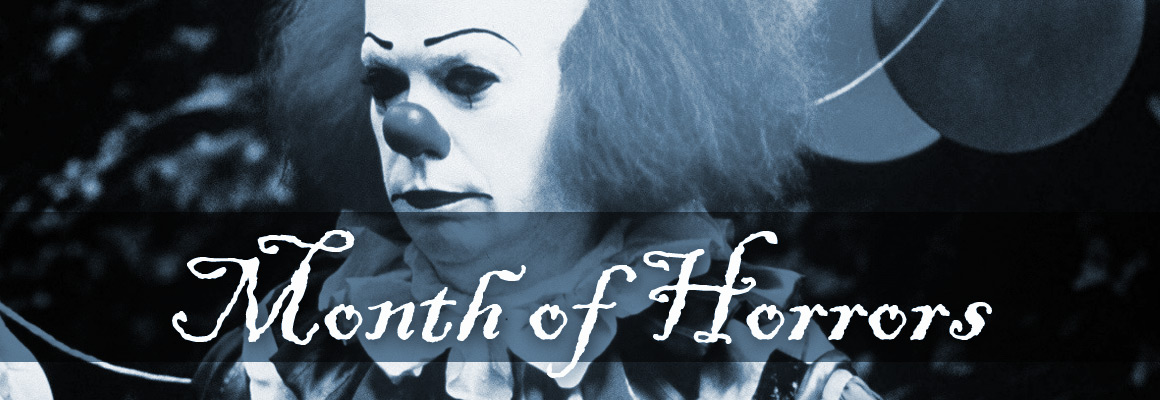
It’s always interesting to look at the stats on the WWEnd site, to see where visitors come from, what pages they like, how long they stay, and which areas are most popular. As it turns out, the most popular page on WorldsWithoutEnd.com is the novel page for It. While It is obviously a well-read novel—87 members have marked it as read, and 53 have rated it—the book remains unreviewed on our site. I thought that odd, and decided to make it a project for this year’s Month of Horrors to read and review Stephen King’s popular book. At 1090 pages, this was a daunting task, but King’s prose is rarely difficult to read, even if his subject matter is often repulsive, and I managed to complete it in about two weeks. After finishing this brick of a book, I think I have a better sense of why it’s as well loved as it is. That doesn’t mean I particularly love it, myself, but I think it might be constructive to explore why I do not. (Some revealing spoilers ahead, be warned.)
Grand Master Reading Challenge September Review Winner: Daniel Roy
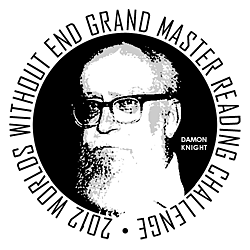
![]() The September GMRC Review Poll closed a few days ago and the winner is Daniel Roy (triseult) for his review of Poul Anderson’s Tau Zero. Well done, Sir!
The September GMRC Review Poll closed a few days ago and the winner is Daniel Roy (triseult) for his review of Poul Anderson’s Tau Zero. Well done, Sir!
Daniel will receive a T-shirt, a GMRC button and a set of commemorative WWEnd Hugo Award bookmarks as well as his choice of book from the WWEnd bookshelf. All runners-up will be getting a button and a set of bookmarks for their efforts.
The GMRC is starting to wind down now with just a few months to go and I imagine there are some folks out there playing catch-up like me. So far our 167 participants have logged 631 books read and have posted 192 reviews. It’ll be interesting to see how those numbers change as the end of the challenge approaches. Thanks to everyone for your participation and best of luck completing your challenge!
Carrie Trailer
I’ve never seen the original film, although I read the novel a few years back. Not my favorite King book, but I’d say that Chloë Moretz is the kind of actress who could pull this off, if anyone can.
Nightmare Magazine’s Top 100 Horror Books
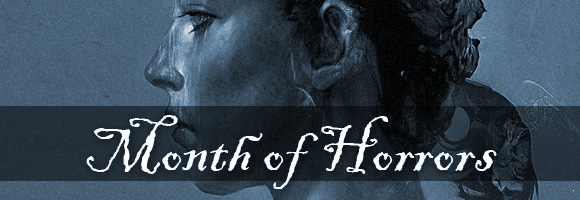
One of the things we really wanted to do for Month of Horrors was expand our selection of Horror novels on the site. Last year we added the Bram Stoker Award and the Horror Writers Association Reading List, and at the top of this month we added the Shirley Jackson Award. All great additions, of course, but we found ourselves wanting more. Our Horror selection is still dwarfed by Science Fiction and Fantasy, so we thought it would be great to add a new Horror-based reading list. Unfortunately, none of us running the show at WWEnd are experts in Horror, so any list we could have created would be a wild guess at best, or a hilarious mess at worst.
 So we decided to consult the experts at Nightmare Magazine, instead.
So we decided to consult the experts at Nightmare Magazine, instead.
What we got back was a list of Nightmare Magazine’s Top 100 Horror Books, spanning everything from late gothic to splatterpunk, from killer clowns to devil babies, from vampire romance to vampire apocalypse. It’s like a synecdoche of the entire genre through it’s entire history, and we like to think it has a little something for everyone. Our thanks to Nightmare publishers John Joseph Adams and R. J. Sevin especially for creating this great list!
(Please note that many of the anthologies are included in the list in their entirety, not just as their first volumes. We will be adding the rest of the volumes to the WWEnd database over the next few days.)
Peruse the new list to see if there’s anything you want to add to your reading list. Remember, your Horror reviews posted on WWEnd throughout October will be considered for publication in the blog for the Month of Horrors.
Forays into Fantasy: Robert E. Howard’s Conan
Scott Lazerus is a Professor of Economics at Western State Colorado University in Gunnison, Colorado, and has been a science fiction fan since the 1970s. The Forays into Fantasy series is an exploration of the various threads of fantastic literature that have led to the wide variety of fantasy found today, from the perspective of an SF fan newly exploring the fantasy landscape. FiF will examine some of the most interesting landmark books of the past, along with a few of today’s most acclaimed fantasies, building up an understanding of the connections between fantasy’s origins, its touchstones, and its many strands of influence.
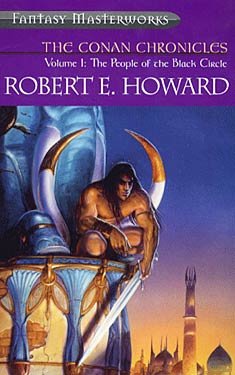 Honestly, I didn’t think Robert E. Howard’s series of Conan stories, written and mostly published during the first half of the 1930s, would be of much interest to me. But given their importance as the tales that mark the beginning of a major subgenre that is still going strong today—what would come to be known as sword and sorcery—I thought my fantasy history tour would be incomplete without at least giving them a look. Given the continued popularity and influence of these stories, I should have known that there would be more to them than my preconceptions of a giant barbarian warrior with an equally giant sword hacking his way from one adventure to the next (not that there isn’t some truth to that description), and it turns out there are good reasons that Howard’s stories are considered central to the development of fantasy, and that the best of them are still interesting and enjoyable today.
Honestly, I didn’t think Robert E. Howard’s series of Conan stories, written and mostly published during the first half of the 1930s, would be of much interest to me. But given their importance as the tales that mark the beginning of a major subgenre that is still going strong today—what would come to be known as sword and sorcery—I thought my fantasy history tour would be incomplete without at least giving them a look. Given the continued popularity and influence of these stories, I should have known that there would be more to them than my preconceptions of a giant barbarian warrior with an equally giant sword hacking his way from one adventure to the next (not that there isn’t some truth to that description), and it turns out there are good reasons that Howard’s stories are considered central to the development of fantasy, and that the best of them are still interesting and enjoyable today.
One reason I hadn’t approached them before was my memory of the endless rows of Conan paperbacks on bookstore shelves while haunting the science fiction and fantasy sections during the 1970s, along with the multiple similar series, spinoffs, and even parodies. By that time, sword and sorcery had been stereotyped as the realm of muscular barbarians, scantily-clad damsels in distress, and escapist adventure, and the sheer repetitiveness of the cover images seemed to verify it. As it turns out, this reaction was unfair to Howard’s creation, which went through a long and confusing publishing history that in some ways took the character further and further from its origin in Howard’s stories.
The Owl Killers, by Karen Maitland
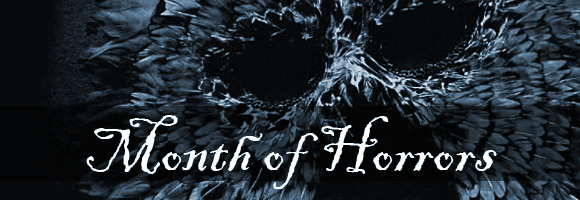
Today’s Month of Horrors review is from blogger and WWEnd member Valashain. This review originally appeared on his blog Val’s Random Comments, where he regularly reviews science fiction and fantasy books. The Owl Killers was a 2009 nominee for The Shirley Jackson Award.
The medieval period in Europe serves as an inspiration to many a fantasy novel. Apparently there is something very appealing to imagining oneself living in such an environment, so much so that our perception of the period has become more than a bit romanticized. In sharp contrast, history books tell us just how miserable and brutal life could be for a large part of the population. Historical fiction does not entirely escape the romanticizing of this period but quite a few novels attempt to paint a more realistic picture. Like Maitland’s previous book Company of Liars, The Owl Killers does not shy away form the harshness of life. Hunger, disease, natural disasters, oppressive taxation and unbridled religious madness, very little is spared the 14th century village the book depicts. It makes The Owl Killers in a very dark book. Fear is a main ingredient and the author makes sure the reader knows it.
Horror Magazines
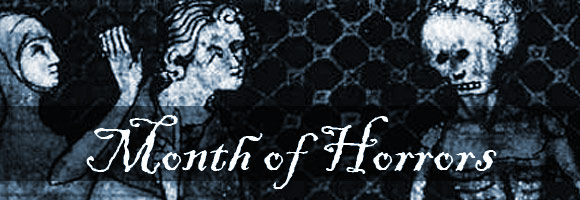
I’ve been hearing for years that genre magazines are going the way of the Dodo. From where I’m standing, it looks like a pretty healthy market. On our Magazines page we have listed over 70 genre magazines for you to choose from and we keep finding more new ones to add all the time.
For our Month of Horrors I wanted to point out some of the Horror magazines from out list. If you’re looking for something creepy and scary these magazines will get the job done. Check ’em out and if you find something you like show your support by subscribing!
Apex Magazine
Apex Publications started as a tingle in the mind of Jason Sizemore during the month of November in the year 2004. Having been a fan of the small press scene for several years, he noticed a lack of a certain type of fiction: Science-Horror.
Black Static
Black Static is a horror magazine that has earned much praise for its style, bravery, editorial and fiction content. Its stories are innovative and daring, never afraid to shock or disturb yet never forget to entertain.
Murky Depths
Murky Depths is a quarterly anthology with a difference. It features top quality speculative fiction with sprinklings of horror and fantasy that push the boundaries of science fiction. Each story is complimented with its own unique artwork.
Mythic Delirium
Mythic Delirium is a biannual journal that publishes science fiction, fantasy, horror, surreal and cross-genre poetry.
Nightmare Magazine
Nightmare is an online horror and dark fantasy magazine. In Nightmare’s pages, you will find all kinds of horror fiction, from zombie stories and haunted house tales, to visceral psychological horror. No subject is off-limits, and we will be encouraging our writers to take chances with their fiction and push the envelope.
Nightmare is brand new on the market – their first issue was released October 1st.
Shock Totem
Shock Totem is a bi-annual dark fantasy and horror publication. Our first issue was published in July of 2009. We focus on the one thing that matters most: the story. Back to basics. Each issue features fiction that we, as readers, enjoy. Within our pages, new and established authors are equals.
Something Wicked
Something Wicked is a monthly online and electronic-download science fiction and horror magazine. Published monthly, we feature some of the best new voices in horror and science fiction from around the world.
Tales of the Unanticipated
Tales of the Unanticipated is a journal of speculative fiction, fantasy, horror, and stories that you just wouldn’t anticipate. Tales of the Unanticipated is currently published annually.
Weird Tales
Weird Tales was launched to showcase writers trying to publish stories so bizarre and far out, no one else would publish them — stories of unearthly dimensions and dark possibilities, gothic seductresses and cosmic monstrosities.



















 Full Details
Full Details
